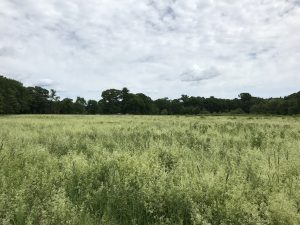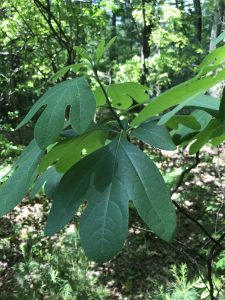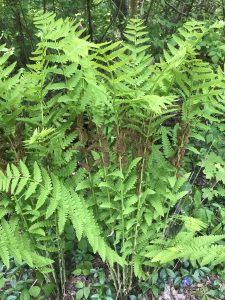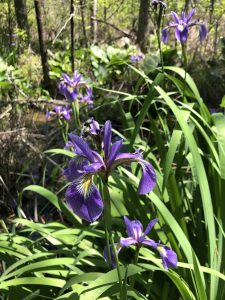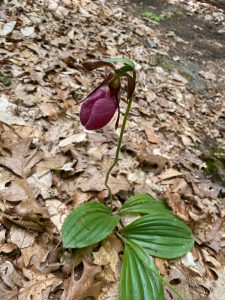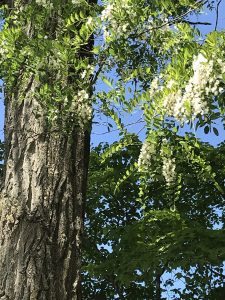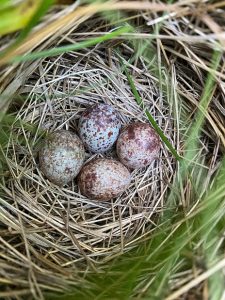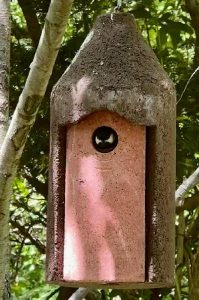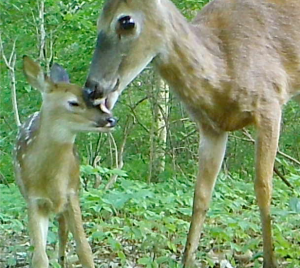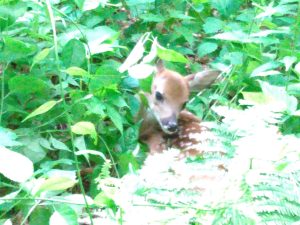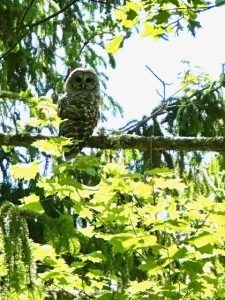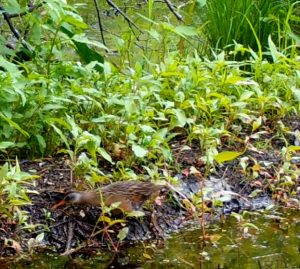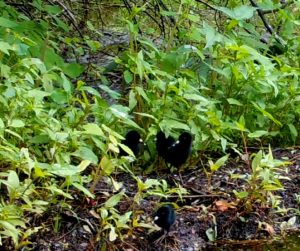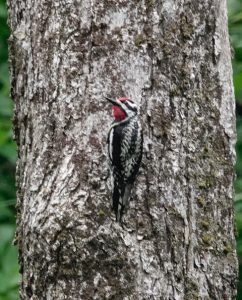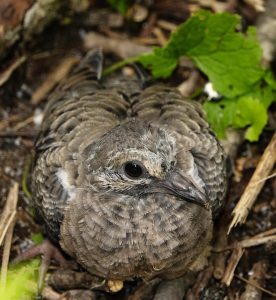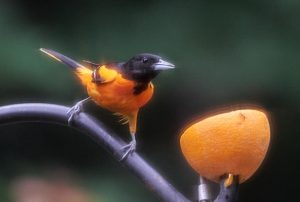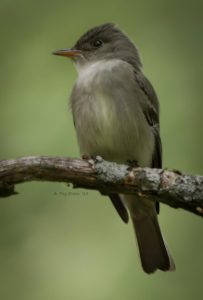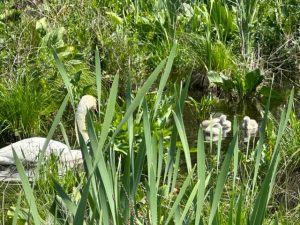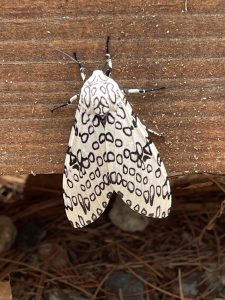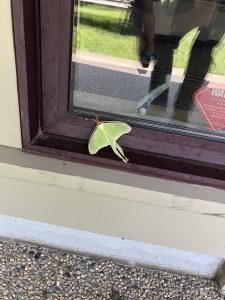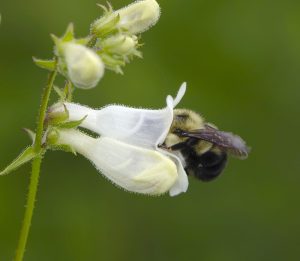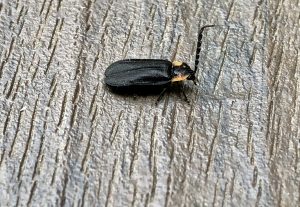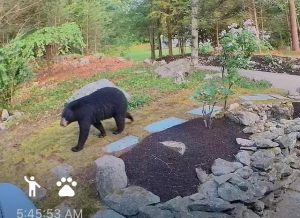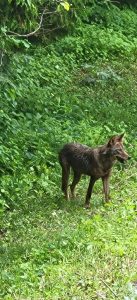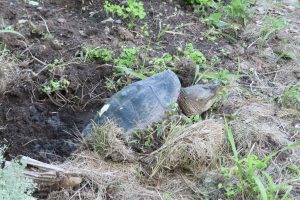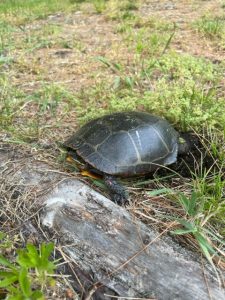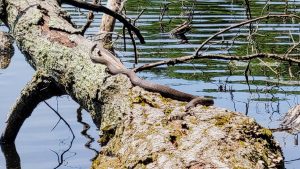Written by Gwyn Loud for the Lincoln Land Conservation Trust. She welcomes your sightings and questions at 781-259-8690 or gwynloud555@gmail.com
Summer arrived officially on June 21, the solstice and longest day of the year, when the sun at noon is at its highest of the year. Thereafter, the hours of daylight start to shorten. It always seems paradoxical that the hottest days of summer come when the hours of daylight are diminishing but this is because it takes a month or two for the strong rays of the sun to actually heat up the oceans and land. The weather over the past month has been variable, with days of temperature both above and below normal, and enough rain to keep our gardens and crops growing, and streams flowing. Worrisome days came on June 6 and 7 when smoke from the wildfires in Canada came into New England, causing hazy skies and poor air quality.
Black locust trees flowered recently, and now the catalpas are blooming, although our beloved twisted tree by the Library flowers later than many. Wildflowers such as cow vetch, purple crown vetch, red clover, daisies, and common yarrow are decorating fields, and iris can be found in swampy areas. A large patch of penstemon digitalis is growing in a field by Virginia Road and some hayfields in town are being invaded by bedstraw. Along roadsides you might come across whorled loosestrife and herb Robert. Various species of ferns are flourishing in the woods and at the beginning of June lady’s slippers could still be found in bloom. I have been noticing sassafras saplings (sometimes called the “mitten tree”). Mulitflora rose is flowering everywhere, and a new invasive, narrowleaf bittercress is one to watch for.
Families of young birds are all around us and it is amusing to observe “teenage” juveniles on a branch still begging parents to feed them. I was thrilled to actually witness 3 of “my” bluebird fledglings take their first flights. Now those parents are starting a nest for a third brood. Observers have told me they almost stepped on nests or fledglings in the grass and another resident told of finding house finches nesting in his old Christmas wreath. Brown-headed cowbirds lay their eggs is other birds’ nests and they frequently parasitize song sparrows. It is possible that one or two of the eggs in the photo of song sparrow nest enclosed are cowbird eggs. The strategy works for cowbirds as the baby cowbird is larger than the host babies and often dominates the “siblings”, and gets more food. I have seen a chickadee feeding a giant fledgling cowbird, twice the size of the adoptive parent.
A pair of mute swans hatched four cygnets on Farrar Pond, although only one remains. One of my neighbors wrote about watching baby wood ducks, “five little puffballs”, and a resident of Old Concord Rd. saw four baby barred owls lined up on a branch. The great blue herons nesting in a dead pine along Stony Brook hatched one young; it looks quite ungainly teetering on its long legs. To repeat what I wrote last month, what should you do if you find a baby bird on the ground? In nearly all cases it is best to leave it alone as, unknown to us, the parent is probably nearby, well aware of the situation and will take care of it. If you can see a nest from which it fell, you could gently put it back in the nest. The same advice holds for finding baby mammals, such as fawns or baby rabbits. Rabbits especially stay away from their young so as not to attract predators, and does will return at dusk to nurse fawns.
Many of us love listening to the bird songs around us and an article in May in the Washington Post reported, “The researchers found a significant positive association between seeing or hearing birds and improved mental well-being, even when accounting for other possible explanations such as education, occupation, or the presence of greenery and water, which have themselves been associated with positive mental health.” I believe it! Bird songs we hear now are often fledgling calls or “the usual” house wrens, blue jays, cardinals, and titmice. You might be lucky to hear a wood thrush sing its lovely ee-o-lay in the deep woods, and from the tree canopy, an Eastern wood pewee with its high pee-oh-wee song or a scarlet tanager sounding like a robin with a sore throat.
Several interesting birds have turned up in Lincoln over the last few weeks. Yellow-breasted sapsuckers may have nested here for the first time, American kestrels are still at Drumlin Farm, and birders have spotted blue-winged warblers, Virginal rails in Well meadow, bobolinks in several fields, indigo buntings, willow flycatchers, and a veery in the Van Leer Swamp. Young wild turkey poults are often in big flocks of combined families, and a staff member at Drumlin Farm wrote, “Our famous male turkeys (2 old guys- huge birds from the Muppets, I swear) held up 117 evening traffic as they walked through the path from HQ to our parking lot and beelined to the bird feeders. They are completely habituated. They could care less if you are standing 4 feet away from them.”
Insects are more noticeable as the weather warms, although several people have commented that they are seeing fewer mosquitoes and dragonflies than usual. Crickets began chirping a few weeks ago and let’s hope that bumblebees and other wild bees thrive in all the pollinator gardens that have been created around town. I have recently noted earwigs, a type of insect which likes cool moist places. They are harmless to humans even though their pincers look alarming. They have nothing to do with ears! The LLCT sponsored a firefly walk led by Avalon Owens on June 15 in the Smith-Andover Field. Participants saw five firefly species. Bryn Gingrich wrote, “Some of the species we observed are only around for a few weeks. Then, other firefly species will dominate. Likewise, we observed more crepuscular (dusk) species. In darker areas of the state, there is a greater diversity of fireflies active throughout the entire night. That’s part of why dark skies and conservation of firefly habitat is so important.” On June 26 a resident of Bedford Rd. saw the first monarch butterfly of the season in her garden.
Our common mammals such as deer and chipmunks seem to be plentiful, and the woodchuck and rabbits are enjoying my garden. I am trying to learn to share. Coyotes give a regular nighttime howling chorus in my neighborhood and neighbors have lost chickens to them. An unusual sighting a couple of weeks ago was of a bear in a garden near the Cambridge Reservoir. In spite of white-nose syndrome, little brown bats are holding their own in a colony which has been in Lincoln for decades.
Although gray tree frogs are still calling intermittently, we now primarily hear bullfrogs, Mary Holland writes, “The low humming sound of hundreds of male Bullfrogs “jug-o-rumming” on their breeding grounds fills the air this time of year. So energized are these frogs that singing occurs during the day time as well as at night. While attracting a mate is one reason for this serenade, establishing a territory is the initial objective. According to Tom Tyning (Stokes Guide To Amphibians and Reptiles) a male Bullfrog’s territory is a circular area that may be anywhere from six to twenty feet in diameter. Males who are singing have established territories and tend to be the largest and oldest individuals. Should another male challenge a resident Bullfrog, there can be physical altercations in the form of wrestling matches in which males hold each other and attempt to gouge each other with their thumbs.”
Many people have observed snapping turtles and painted turtles digging holes and laying eggs. If you see what looks like a rock in the road, slow down to make sure it is not a turtle. See link below for instructions how to safely move a snapping turtle without hurting either the turtle or yourself. Snakes sighted recently include water snakes and a couple of milk snakes (one dead, alas). Milk snakes are harmless and sometimes turn up in basements.
Looking skyward, The Old Farmer’s’ Almanac reminds us that on July 1 we should “head outside in the fading evening twilight to see Venus and Mars near each other, dazzling next to blue Regulus, Leo’s brilliant brightest star. Bright Venus will be a sight to behold with a magnitude of -4.7.Venus has been at her brightest in 8 years through early July!.”


